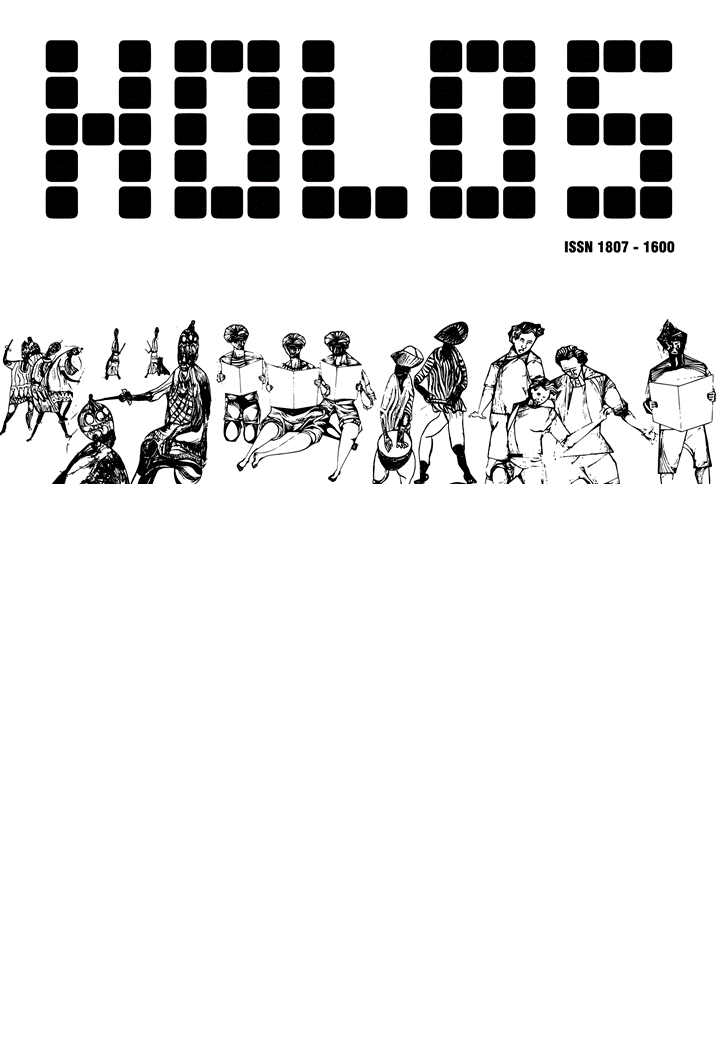SHUFFLED FROG LEAPING ALGORITHM AND FEATURE SELECTION FOR IMPROVING RECOGNITION RATE OF PERSIAN HANDWRITTEN DIGITS CLASSIFIER
DOI:
https://doi.org/10.15628/holos.2017.6144Palavras-chave:
Persian handwritten digits recognition, Shuffled Frog Leaping algorithm (SFLA), features selectionResumo
In this paper, Shuffled Frog Leaping Algorithm is used to improve the recognition rate of Persian handwritten digits. In proposed approach, the effective features in increasing the recognition rate are selected using the Binary Shuffled Frog Leaping Algorithm (BSFLA). By selecting the most suitable features from among all extracted features, the recognition rate is improved and computational costs are also decreased. The fitness function in BSFLA is the number of errors in the Fuzzy classifier which its minimum value is desired. The results indicate that Shuffled Frog Leaping algorithm (SFLA) is more efficientDownloads
Referências
Bi Jami, E. E., Akbar;Askari, Javad. (2011). Problem Solving of Economic Distribution of Nonconvex Charge Using New Hybrid Frog Leaping Algorithm. Journal of Intelligent Systems in Electrical Engineering, 2(3), 35-52.
Darvish, A., Kabir, E., & Khosravi, H. (2005). Application of Shape Matching in Persian Handwritten Digits Recognition. Modares Technology and Eng, 22, 37-47.
Eusuff, M. M., & Lansey, K. E. (2003). Optimization of water distribution network design using the shuffled frog leaping algorithm. Journal of Water Resources planning and management, 129(3), 210-225.
Ghanbari, N. R., S.Mohammad; Nabavi Karizi, S. Hassan. (2010). Using GSA algorithm in feature selection and features weighting for improving the recognition rate of Persian handwritten digits by Fuzzy classifier. Paper presented at the Sixteenth Annual International Conference of Computer Society of Iran, Iran.
Gomez-Gonzalez, M., Ruiz-Rodriguez, F., & Jurado, F. (2014). Probabilistic optimal allocation of biomass fueled gas engine in unbalanced radial systems with metaheuristic techniques. Electric Power Systems Research, 108, 35-42.
Johari, V., & Razavi, M. (2001). Fuzzy Recognition of Persian Handwritten Digits. Paper presented at the Proc. 1st Iranian Conf. on Machine Vision and Image Processing, Birjand.
Khosravi, H. (2006). Recognition of Persian Handwritten Letters and Digits in MA National Exam Registration Forms.
Khosravi, H., & Kabir, E. (2007). Introducing a very large dataset of handwritten Farsi digits and a study on their varieties. Pattern recognition letters, 28(10), 1133-1141.
Miri, I. R., S. Mohammad; Sadri, Javad. (2013). Improving the Recognition Rate of Persian handwritten digits Fuzzy Classifier by K-means Clustering and Particle Swarm optimization. Journal of Soft Computing and Information Technology, 2(1).
Nafisi, H. Z. K., Ehsan Allah. (199). Recognition of Persian Handwritten Digits. Paper presented at the Second Conference on Electrical Engineering, Iran.
Nahvi, M. R., Mahdi; Ebrahim pour, Reza; Kabir, Ehsan Allah. (2008). Combination of Two-Class Classifiers for Recognition of Persian Handwritten Digits. Paper presented at the Sixteenth Conference on Electrical Engineering.
Ranjkesh, S. (2013). Improved Frog Leaping Algorithm Using Cellular Learning Automata. International Journal of Engineering-Transactions A: Basics, 27(1), 1.
Rashedi, E., Nezamabadi-Pour, H., & Saryazdi, S. (2009). GSA: a gravitational search algorithm. Information sciences, 179(13), 2232-2248.
Rashedi, E., Nezamabadi-Pour, H., & Saryazdi, S. (2010). BGSA: binary gravitational search algorithm. Natural Computing, 9(3), 727-745.
Razavi, S. M. S. Y., Hadi; Kabir, Ehsan Allah. (2001). Selecting Feature for Persian Handwritten Digits Recognition by genetic algorithms. Paper presented at the Seventh Annual Conference of Computer Society of Iran, Iran.
Seyedi, I. M. F., Malihe; Barati, Mohammad; Nezam Abadi pour, Hossein. (2011). A New Approach for positioning Multi-mode Problems Using Improved Frog Leaping Algorithm. Journal of Intelligent Systems in Electrical Engineering, 2(1), 45-56.
Shahriari Kahshki, M. Z., Maryam. (2011). Hybrid Learning Algorithm for Designing Fuzzy Wavelet Networks for Functions Approximation, Real-time Identification and Control of Nonlinear Systems. K. N. Toosi University of Technology, 5(1), 14-26.









































